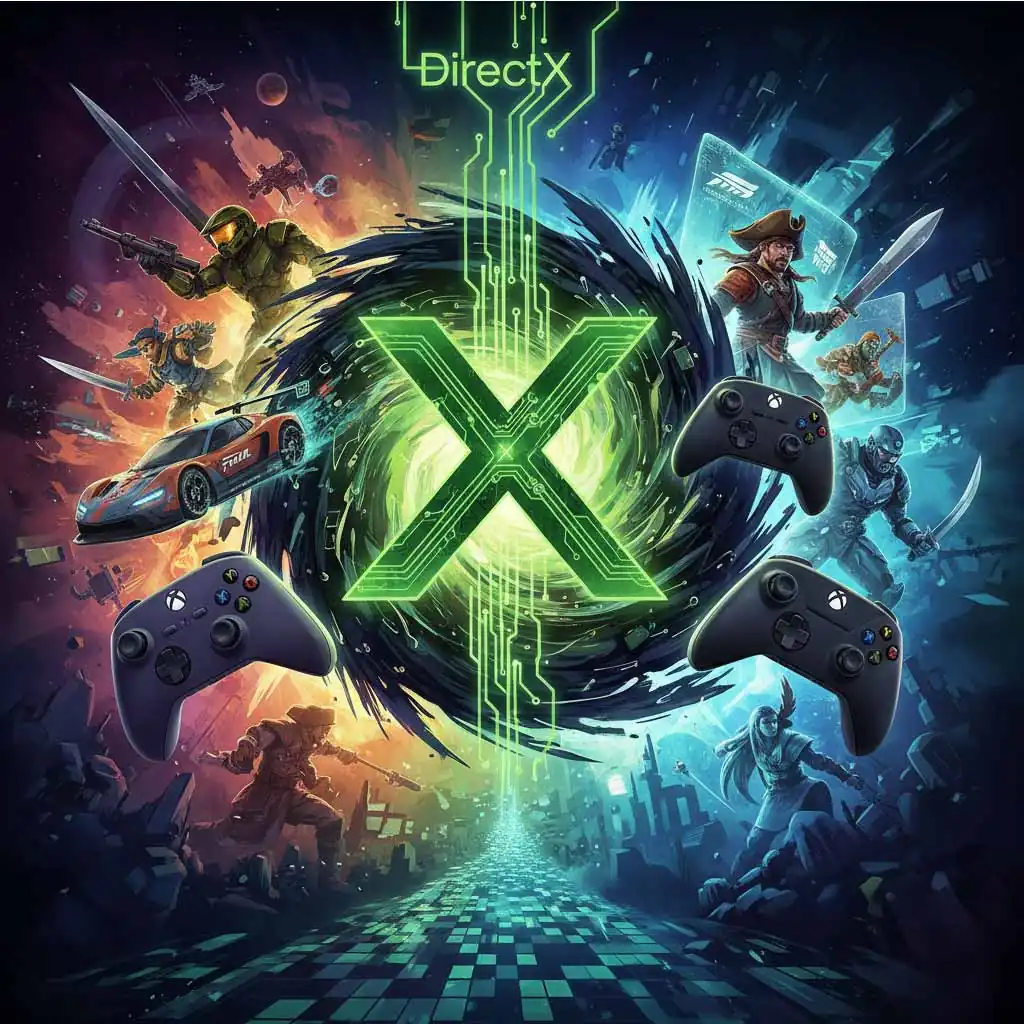This brand represents more than just a piece of electronic hardware; it is a global phenomenon, a dynamic ecosystem of gaming, and a significant pillar of Microsoft’s technological empire. A video game console is a dedicated machine for playing games, and since its inception, the Xbox has consistently pushed the boundaries of what these devices can achieve. It has transformed from a humble, inaugural console into a sophisticated, interconnected network that defines the modern gaming experience for millions of players worldwide. This comprehensive guide delves into the essence of what an Xbox is, exploring its origins, core technology, and the expansive universe it has created. By the time you finish reading, you will possess a profound understanding of this influential gaming brand and its indelible impact on the world of interactive entertainment.
The Genesis of Xbox: A Bold Leap into a New Era
The story of the console is a tale of innovation and strategic ambition. It was born out of a perceived threat to Microsoft’s core business, the personal computer. In the late 1990s, the video game console market was dominated by Japanese giants Sony and Nintendo. Microsoft’s leadership became concerned that a console like the PlayStation 2, which could play DVDs and act as a living room entertainment hub, might eventually supplant the PC as the central home device. This concern fueled a bold, high-stakes project to develop a console of their own. The team behind the initiative was small but passionate, and their vision was to create a console based on PC architecture, a move that would distinguish it from the proprietary hardware of its competitors.
Did you know?
The original codename for the Xbox project was “Project Midway,” a playful nod to the Battle of Midway in World War II, symbolizing Microsoft’s hopeful victory against the Japanese-dominated console market.
The original console was an ambitious and powerful machine for its time. Launched on November 15, 2001, it represented Microsoft’s official debut in the console market, directly competing with the PlayStation 2, Sega Dreamcast, and Nintendo GameCube. Its name, “Xbox,” was a simple contraction of “DirectX Box,” referencing Microsoft’s DirectX graphics API, which was the foundation of its software and development tools. Its PC-like architecture was a major selling point, making it easier for game developers who were already familiar with the Windows operating system to create games for the new platform. A built-in hard drive, a first for a console, was another revolutionary feature that eliminated the need for memory cards and allowed for faster load times and the installation of game content.
The Xbox 360 Revolution: Redefining Online Gaming
Following the successful but not overwhelmingly dominant run of the original console, Microsoft made a significant leap with the Xbox 360. Released in November 2005, a full year ahead of its main rival, the PlayStation 3, the Xbox 360 was a game-changer. It introduced high-definition graphics as a standard, transforming the visual fidelity of games and setting a new benchmark for the industry. However, the most profound innovation was not the console itself, but the massive expansion of the Xbox Network (then known as Xbox Live).
Did you know?
The Xbox 360’s initial online service, Xbox Live, was so successful that it sold over 1.5 million units in its first month, setting a new record for console launches at the time.
Xbox Live, which had existed on the original console, was now deeply integrated into the 360’s core experience. It offered a robust, cohesive online multiplayer service with a standardized friends list, a unified identity for players across all games (the “Gamertag”), and integrated voice chat. This service fundamentally popularized online console gaming, creating a vibrant, interconnected community. It provided a platform where players could not only compete but also socialize, download content, and purchase games digitally. The Xbox 360’s launch was also bolstered by an incredible lineup of exclusive games, cementing the brand’s status as a serious contender in the console wars.
The Modern Era: The Evolution of the Console
The evolution continued with the launch of the Xbox One in 2013. Initially marketed as an “all-in-one” entertainment hub for the living room, it sought to integrate television, apps, and gaming into a single device. The Xbox One’s vision was grand, but it was the company’s later pivots, particularly the introduction of Xbox Game Pass, that would truly define its modern identity.
Today, the Xbox brand is defined by the latest generation of consoles: the Xbox Series X and the Xbox Series S, which were launched in November 2020. These two consoles represent a dual-pronged approach to the market, catering to different types of gamers. The Xbox Series X is the flagship model, a powerhouse designed for enthusiasts who want the most powerful hardware and the highest visual fidelity. Its counterpart, the Xbox Series S, is a more affordable, compact, and all-digital console, designed for players who are content with excellent performance at a lower resolution and without a physical disc drive. This strategy of offering different hardware at different price points has made the current generation of Xbox more accessible than ever before.
A Deeper Dive into the Xbox Series X vs. Series S
Understanding the difference between the current-gen consoles is critical to grasping what an Xbox is in 2024 and beyond. While both systems are built on the same core technology and share the same games, their hardware specifications lead to distinct experiences.
The Xbox Series X is the ultimate performance machine. It features a custom AMD Zen 2 CPU and a custom AMD RDNA 2 GPU, delivering an incredible 12 teraflops of raw graphical power. This translates to native 4K gaming, which means games run at a crystal-clear resolution with stunning detail. It also includes a 4K Blu-ray drive, allowing for the playback of physical game discs and movies. With a 1TB custom NVMe SSD, games load at lightning speeds, and the innovative Quick Resume feature lets you instantly switch between multiple games.
Details
| Feature | Series X | Series S |
|---|---|---|
| Targeted Resolution | Native 4K | 1440p |
| GPU Power | 12 Teraflops | 4 Teraflops |
| Optical Drive | 4K UHD Blu-ray | None (All-Digital) |
| Internal Storage | 1TB NVMe SSD | 512GB/1TB NVMe SSD |
| Backward Compatibility | All supported generations | All supported generations |
| Size & Weight | Larger and heavier | Significantly smaller and lighter |
The Xbox Series S, by contrast, is a triumph of efficiency and value. It uses the same custom CPU architecture as the Series X but with a less powerful GPU, providing 4 teraflops of graphical power. This hardware is optimized for 1440p gaming, which looks excellent on most modern TVs and monitors. The Series S is a purely digital console, meaning it has no disc drive; all games must be downloaded from the Microsoft Store. It comes with a smaller 512GB (or 1TB on some models) SSD, but it still benefits from the same revolutionary Xbox Velocity Architecture, which ensures fast load times and enables Quick Resume. The Series S is significantly smaller and lighter, making it a great choice for those with limited space or a smaller budget.
The most significant takeaway here is that both consoles are truly “next-gen.” They offer features like hardware-accelerated ray-tracing for more realistic lighting and shadows, and they can support frame rates up to 120 FPS in select titles for incredibly smooth gameplay. Ultimately, the choice between them depends on a user’s display, budget, and preference for physical media.
The Xbox Ecosystem: More Than Just a Console
The true definition of what an Xbox is extends far beyond the physical console itself. Microsoft has meticulously built a multifaceted ecosystem of hardware, software, and services that work together to provide a seamless and expansive gaming experience. This ecosystem is what gives the console its unique value proposition in the modern market.
Central to this ecosystem is the Xbox Network, a robust online infrastructure that connects players around the globe. It is the backbone for online multiplayer, digital storefronts, and a user’s entire digital library. A user’s Gamertag serves as their persistent identity across all platforms, from a console to a PC or a mobile device.
Game pass and Cloud gaming
The crown jewel of the Xbox ecosystem is Xbox Game Pass. Often described as the “Netflix for games,” this subscription service provides access to a massive and constantly rotating library of hundreds of high-quality games. This includes all first-party titles from Xbox Game Studios, such as Halo and Forza, on the day of their release. This value proposition has been a key driver of the Xbox brand’s growth and has fundamentally changed how many people discover and play games. The premium tier, Game Pass Ultimate, takes this a step further by bundling Game Pass with PC Game Pass, an EA Play membership, and Xbox Cloud Gaming.
Xbox Cloud Gaming, formerly known as xCloud, is a groundbreaking technology that allows users to stream and play games from the cloud on a variety of devices, including phones, tablets, and PCs. This service is a testament to Microsoft’s forward-thinking approach, aiming to make gaming accessible to everyone, regardless of their hardware. It allows players to try a game instantly before they download it or to continue their game on the go, making the gaming experience more fluid and less tied to a single piece of hardware.
The Games: A Rich and Diverse Library
A console is only as good as its games, and the Xbox brand has cultivated a rich and diverse library. First-party games, developed by Xbox Game Studios and its many acquired studios, are the flagship titles. Iconic franchises such as Halo, Gears of War, and Forza have become synonymous with the brand, each defining its genre. The recent acquisition of major publishers like Bethesda and Activision Blizzard has also massively expanded the Xbox family of studios and its game library, bringing legendary series like The Elder Scrolls, Fallout, and Call of Duty into the fold.
Beyond these blockbuster exclusives, the Xbox platform is also a welcoming home for third-party games from every major publisher, ensuring a steady stream of the most anticipated releases. Furthermore, the ID@Xbox program supports independent developers, providing a platform for unique and innovative indie games. This commitment to both AAA blockbusters and creative indie titles ensures that the Xbox library offers something for every type of gamer.
The Future of the Xbox: Beyond the Box
Looking forward, the future of the Xbox brand is even more exciting. Microsoft’s vision is clearly shifting beyond the traditional console model and into a future defined by accessibility and cloud-based services. Artificial intelligence (AI) is already playing a role and will become even more significant, from personalizing the user experience to streamlining game development. AI could help create more realistic and dynamic game worlds or even assist in managing a player’s library with smarter recommendations based on their gaming habits.
Fun Fact:
The first-ever Microsoft console weighed nearly 10 pounds (4.5 kg), making it one of the heaviest home consoles ever created, a fact that was often a talking point in its early days.
The integration of Xbox with the broader Microsoft ecosystem is also a key part of its strategy. The “Play Anywhere” initiative allows you to buy a digital game once and play it on both your Xbox console and your Windows PC, with your progress seamlessly synced. This unification of platforms breaks down the traditional barriers between console and PC gaming. The Xbox app on PC and its presence on handhelds and smart TVs further blurs these lines, making the Xbox brand less about a single box and more about a pervasive, multi-device gaming service. This strategic evolution means that in the coming years, “Xbox” may not just be a console, but a service you can access from virtually any screen.
Explore the Full Xbox Universe
This article is just the beginning of your journey. Ready to uncover the full story? Visit our main Xbox hub for everything you need, with deep dives into the console’s history, top games, and all the features that make it a gaming powerhouse.
Frequently Asked Questions About What Is Xbox
Q1: What is the main difference between a gaming console and a PC?
The primary difference lies in their specialization. A gaming console is a dedicated machine optimized solely for playing games, offering a streamlined, “plug-and-play” experience with standardized hardware. A PC is a general-purpose computer that can be used for a wide range of tasks, including gaming, but requires more technical knowledge to manage software, hardware, and updates.
Q2: What is the Xbox Network and do I have to pay for it?
The Xbox Network is Microsoft’s online service for the Xbox brand. A basic account is free and allows for digital purchases and cloud saves. However, a paid subscription like Xbox Game Pass Core is required to access online multiplayer on most paid games.
Q3: Is Xbox Game Pass worth the money?
Xbox Game Pass offers a significant value proposition by providing access to a large, rotating library of games for a monthly subscription fee. For many gamers, especially those who play a wide variety of titles, the cost of the subscription is significantly less than buying just a few new games per year.
Q4: Can I play games from older Xbox consoles on the new ones?
Yes, a crucial feature of the Xbox ecosystem is backward compatibility. The Xbox Series X and Series S can play a vast library of games from the original Xbox, Xbox 360, and Xbox One, often with performance enhancements like improved frame rates and higher resolutions.
Q5: What is a teraflop and why is it important for a console?
A teraflop is a measure of a computer’s processing speed, specifically its ability to calculate one trillion floating-point operations per second. In a gaming console, a higher teraflop count generally indicates greater graphical processing power, leading to better visuals, more complex effects, and smoother performance.
Q6: What is Xbox Cloud Gaming?
Xbox Cloud Gaming is a service that allows you to stream and play Xbox games on devices like phones, tablets, and PCs without having to download or install them. It works by streaming the game from Microsoft’s servers directly to your device.
Q7: How is the Xbox Series S different from the Series X besides the price?
The key differences are performance and features. The Series S is a smaller, all-digital console targeting 1440p resolution and a lower price point. The Series X is a larger, more powerful machine that includes a disc drive and is designed for native 4K gaming.
Q8: Can I use an Xbox without an internet connection?
Yes, you can use an Xbox without an internet connection. You can play single-player games, watch movies from a physical disc on the Series X, and access a wide range of offline features. However, you will not be able to download new games, play online multiplayer, or access streaming services.


















